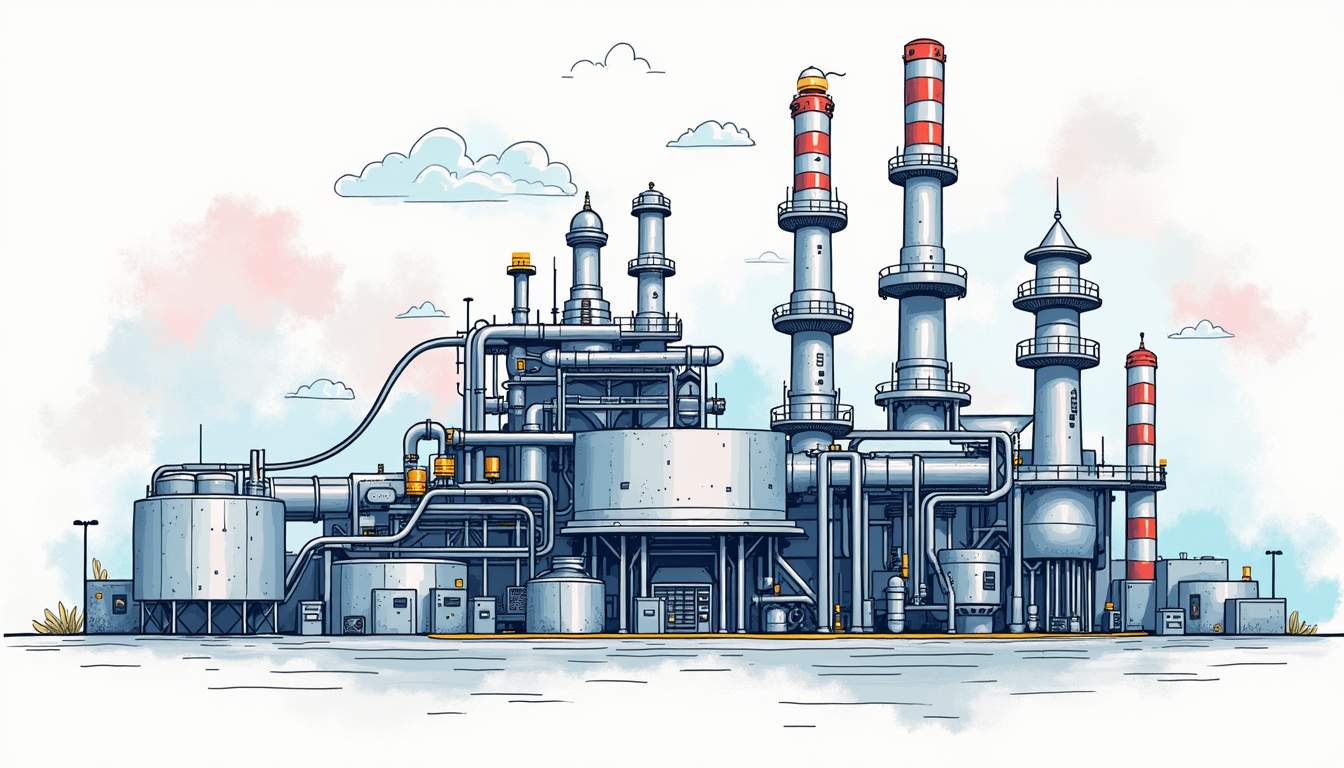Introduction to Predictive Maintenance
Predictive maintenance (PdM) is a proactive maintenance strategy that leverages data analysis tools and techniques to predict when equipment failure might occur. By utilizing various data sources, including historical data, real-time monitoring, and advanced analytics, organizations can schedule maintenance activities just before equipment failure is likely to happen. This approach not only minimizes downtime but also extends the lifespan of machinery and reduces maintenance costs.
The concept of predictive maintenance is particularly relevant in the context of cyber-physical systems (CPS), where physical processes are monitored and controlled by computer-based algorithms. In a cyber-physical plant, predictive maintenance plays a crucial role in ensuring operational efficiency, safety, and reliability. By integrating IoT devices, sensors, and machine learning algorithms, organizations can create a robust predictive maintenance framework that enhances their overall plant design.
As industries continue to embrace digital transformation, the need for predictive maintenance has become increasingly critical. This glossary entry will explore the various aspects of predictive maintenance within the realm of cyber-physical plant design, including its benefits, methodologies, technologies, and challenges.
Benefits of Predictive Maintenance
Implementing predictive maintenance strategies offers numerous advantages to organizations, particularly in the context of cyber-physical plant design. Some of the key benefits include:
- Reduced Downtime: By predicting equipment failures before they occur, organizations can schedule maintenance activities during non-peak hours, significantly reducing unplanned downtime.
- Cost Savings: Predictive maintenance minimizes the costs associated with emergency repairs and excessive maintenance by ensuring that maintenance is performed only when necessary.
- Increased Equipment Lifespan: Regular monitoring and timely maintenance can extend the operational life of machinery, leading to better return on investment (ROI).
- Enhanced Safety: By preventing equipment failures that could lead to hazardous situations, predictive maintenance contributes to a safer working environment.
Furthermore, predictive maintenance can lead to improved operational efficiency. With the ability to analyze data in real-time, organizations can optimize their maintenance schedules and allocate resources more effectively. This results in a more streamlined operation, allowing for better production planning and resource management.
Moreover, the integration of predictive maintenance within cyber-physical systems fosters a culture of continuous improvement. Organizations can leverage insights gained from data analytics to refine their processes, enhance product quality, and ultimately drive innovation.
Methodologies of Predictive Maintenance
There are several methodologies employed in predictive maintenance, each with its own set of tools and techniques. The choice of methodology often depends on the specific requirements of the plant and the types of equipment being monitored. Some of the most common methodologies include:
Condition-Based Monitoring (CBM)
Condition-based monitoring involves the continuous assessment of equipment conditions using various sensors and monitoring tools. This methodology focuses on collecting real-time data related to parameters such as temperature, vibration, and pressure. By analyzing this data, organizations can determine the health of their equipment and make informed decisions regarding maintenance activities.
CBM is particularly effective for critical machinery where failure could lead to significant operational disruptions. The data collected can be used to establish baseline performance metrics, enabling organizations to identify deviations from normal operating conditions and take corrective actions before failures occur.
Predictive Analytics
Predictive analytics involves the use of statistical algorithms and machine learning techniques to analyze historical and real-time data. This methodology aims to identify patterns and trends that can indicate potential equipment failures. By leveraging predictive models, organizations can forecast when maintenance should be performed, thus optimizing their maintenance schedules.
Predictive analytics can be enhanced through the integration of artificial intelligence (AI) and machine learning, which allows for more accurate predictions based on complex datasets. As these models learn from new data, they can continuously improve their predictive capabilities, leading to more effective maintenance strategies.
Reliability-Centered Maintenance (RCM)
Reliability-centered maintenance is a systematic approach that focuses on ensuring the reliability of equipment and systems. RCM involves analyzing the functions of equipment, identifying potential failure modes, and determining the consequences of those failures. This methodology helps organizations prioritize maintenance activities based on the criticality of equipment and the impact of failures on operations.
By adopting RCM principles, organizations can develop a comprehensive maintenance strategy that balances preventive, predictive, and corrective maintenance activities. This holistic approach ensures that resources are allocated effectively and that maintenance efforts are aligned with organizational goals.
Technologies Enabling Predictive Maintenance
The successful implementation of predictive maintenance relies on various technologies that facilitate data collection, analysis, and decision-making. Some of the key technologies include:
Internet of Things (IoT)
The Internet of Things (IoT) plays a pivotal role in predictive maintenance by enabling the connectivity of devices and equipment. IoT sensors can be installed on machinery to collect real-time data on performance metrics, which can then be transmitted to a central system for analysis. This connectivity allows organizations to monitor equipment health continuously and respond to issues as they arise.
IoT technology also supports remote monitoring, allowing maintenance teams to access data from anywhere, thus improving response times and decision-making processes. The integration of IoT with predictive maintenance creates a powerful synergy that enhances operational efficiency and reduces costs.
Big Data Analytics
Big data analytics refers to the process of examining large and complex datasets to uncover hidden patterns, correlations, and insights. In the context of predictive maintenance, big data analytics enables organizations to analyze vast amounts of historical and real-time data from various sources, including sensors, maintenance logs, and operational records.
By applying advanced analytics techniques, organizations can identify trends and anomalies that may indicate potential equipment failures. This capability allows for more accurate predictions and informed decision-making, ultimately leading to improved maintenance strategies and operational performance.
Machine Learning and Artificial Intelligence
Machine learning (ML) and artificial intelligence (AI) are transforming the landscape of predictive maintenance by enabling more sophisticated data analysis and predictive modeling. These technologies can process large datasets and identify complex patterns that traditional analytical methods may overlook.
Machine learning algorithms can be trained on historical data to recognize the signs of impending failures, allowing organizations to predict maintenance needs with greater accuracy. As these algorithms continue to learn from new data, they can adapt and refine their predictions, leading to continuous improvement in maintenance practices.
Challenges in Predictive Maintenance Implementation
While predictive maintenance offers numerous benefits, organizations may face several challenges during its implementation. Some of the key challenges include:

Data Quality and Integration
One of the primary challenges in predictive maintenance is ensuring the quality and integrity of the data being collected. Inaccurate or incomplete data can lead to erroneous predictions and ineffective maintenance strategies. Organizations must establish robust data governance practices to ensure that data is accurate, consistent, and reliable.
Additionally, integrating data from various sources and systems can be complex. Organizations may need to invest in data integration tools and platforms to consolidate data from disparate sources, enabling a comprehensive view of equipment health and performance.
Skill Gaps and Training
The successful implementation of predictive maintenance requires a skilled workforce capable of interpreting data and making informed decisions. However, many organizations may face skill gaps in data analytics, machine learning, and IoT technologies. Investing in training and development programs is essential to equip employees with the necessary skills to leverage predictive maintenance effectively.
Moreover, fostering a culture of continuous learning and innovation can help organizations stay ahead of the curve and adapt to the rapidly evolving technological landscape.
Cost of Implementation
Implementing predictive maintenance can involve significant upfront costs, including investments in technology, infrastructure, and training. Organizations must carefully evaluate the potential return on investment (ROI) and develop a clear business case for adopting predictive maintenance strategies.
Despite the initial costs, the long-term benefits of predictive maintenance, such as reduced downtime and maintenance costs, often outweigh the investment. Organizations should conduct thorough cost-benefit analyses to justify their predictive maintenance initiatives.
Future Trends in Predictive Maintenance
The field of predictive maintenance is continuously evolving, driven by advancements in technology and changing industry demands. Some of the key trends shaping the future of predictive maintenance include:

Increased Adoption of AI and Machine Learning
As AI and machine learning technologies continue to advance, their integration into predictive maintenance practices will become more prevalent. Organizations will increasingly leverage these technologies to enhance predictive capabilities, automate data analysis, and improve decision-making processes.
AI-driven predictive maintenance solutions will enable organizations to achieve higher levels of accuracy in forecasting equipment failures, ultimately leading to more efficient maintenance strategies and reduced operational costs.
Integration with Digital Twins
Digital twins, which are virtual representations of physical assets, are gaining traction in the realm of predictive maintenance. By creating digital twins of equipment, organizations can simulate various scenarios and analyze the impact of different maintenance strategies on performance and reliability.
The integration of predictive maintenance with digital twin technology will allow organizations to optimize maintenance schedules, improve asset management, and enhance overall operational efficiency.
Focus on Sustainability
As organizations increasingly prioritize sustainability and environmental responsibility, predictive maintenance will play a crucial role in minimizing waste and optimizing resource utilization. By preventing equipment failures and reducing energy consumption, predictive maintenance contributes to more sustainable operations.
Furthermore, organizations will leverage predictive maintenance to align their practices with sustainability goals, ensuring that maintenance activities are conducted in an environmentally friendly manner.
Conclusion
Predictive maintenance represents a transformative approach to maintenance management, particularly within the context of cyber-physical plant design. By leveraging data analytics, IoT technologies, and advanced methodologies, organizations can optimize their maintenance strategies, reduce costs, and enhance operational efficiency.

While challenges exist in the implementation of predictive maintenance, the potential benefits far outweigh the obstacles. As technology continues to evolve, organizations that embrace predictive maintenance will be better positioned to thrive in an increasingly competitive landscape.
In conclusion, predictive maintenance is not just a trend; it is a fundamental shift in how organizations approach maintenance and asset management. By understanding its principles, methodologies, and technologies, organizations can unlock the full potential of predictive maintenance and drive continuous improvement in their operations.
Take the Next Step with Cybersort
Ready to harness the power of predictive maintenance and transform your cyber-physical plant operations? At Cybersort, we provide the tools and expertise you need to leverage your plant data effectively. Our platform is tailored to support your journey towards optimized maintenance strategies and improved decision-making. Don’t miss the opportunity to enhance your data management and security. Book a discovery call with us today and start your journey towards operational excellence.


